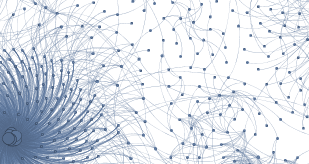
Graph Analytics Appliance Enables Personalized Medicine
While commodity hardware will likely always be a culturally entrenched part of the big data landscape, name-brand high performance computing (HPC) companies have been making inroads into the space with hardware offerings appealing to growing performance demands. This is especially true in the biosciences, where big data as a concept first started to see traction a decade before it became a social media buzz word.
 Earlier this week, we learned about the latest big data hardware offering from indomitable HPC company Silicon Graphics International (SGI). Another supercomputing company, Cray Inc., has been making inroads into the enterprise big data analytics arena through its spin-off subsidiary, YarcData.
Earlier this week, we learned about the latest big data hardware offering from indomitable HPC company Silicon Graphics International (SGI). Another supercomputing company, Cray Inc., has been making inroads into the enterprise big data analytics arena through its spin-off subsidiary, YarcData.
YarcData offers what it calls a “purpose-built big data appliance,” dubbed Urika which it bills as a unit for “real-time data discovery using graph analytics.” Graph analytics has recently started to gain more buzz with companies like Facebook doubling down on open source graph engines like Apache Giraph, where the social network says it’s managed to soup up the code to serve more than a trillion edges.
The YarcData Urika graph appliance enables users to take advantage of the power of schemaless graph analytics, where relationships trump key values. Urika’s hardware is optimized for graph workloads with massively-multithreaded processors supporting 128 threads each and providing up to 512 terabytes of global shared memory and a highly scalable I/O with data ingest rates of up to 350 terabytes per hour. What’s more, it contains an RDF/SPARQL database, giving users options between graph and semantic analytics.
Recently YarcData announced an alignment with bioscience analytics company Selventa, who is pioneering the development of a systems diagnostics tool (called “SysDx”) which it says harnesses a wide range of complex molecular biological information to deliver a level of personalized medicine that has been previously unavailable.
“With 50 percent of drugs [being] ineffective or worse, there is an immediate opportunity to better match treatments to individuals based on their biomarker profiles,” said Dave de Graaf, President and CEO of Selventa. “Using this this insight, pharmaceutical companies can create a larger number of targeted products that optimally benefit patients.”
Imagine a cancer drug treatment that has been prescribed to a patient to match specific biomarkers that attack that cancer specifically, as well as conform to the individual’s own genetics. “Very often, it’s a number of drivers that together drive the diseases in an individual patient,” explained de Graaf in a website video. “We can do that to profile a disease area and move from the relative primitive diagnosis that we have for many diseases to a really refined, specific molecular diagnosis of disease. You can think of it in a way as systems pharmacology turned into systems diagnostics.”
Selventa is accomplishing this new approach to medicine using Urika’s graph analytics. Where traditional databases fenced in the data in a way that made it impossible to make the connections needed to accomplish this level of individualized medicine, graphs are just what the doctor ordered.

“Selventa came from this amazing time in the late 90’s…when lots of data was being produced in the genetics and genomics space, and we thought that this would solve all the problems in medicine,” said de Graaf. “The reality was that it was…the start of big data – but the analytics were missing.”
Turning to the graph powered Urika box has upped Selventa’s game, said de Graaf. “Big data and the intellectual properties derived from it have an immense potential to drive personalized medicine,” he commented in a statement. “This, in turn, will lead to an increase in knowledge and our requirements for scalable, flexible solutions that can deliver results in a fraction of the time than the traditional databases. In searching for a graph database solution, nothing compared to [Urika’s] ability to pull all the data into one platform and one memory space to achieve the real-time speed and scalability,” he explained.
Without a doubt, graph analytics are on the rise. While it’s not exactly a new concept, it’s an analytic field that is still in its infancy as a “data meets compute” endeavor. As organizations implement graph solutions, it will be interesting to see whether it’s determined that an appliance is the most holistically cost effective way to deliver on its potential. It’s an open question that ultimately the market will decide.
Related items:
Venturing Into the Great Unknown with YarcData
Teradata Adds Graph Engine to the Data Discovery Mix with Aster 6
Hadoop Version 2: One Step Closer to the Big Data Goal


























